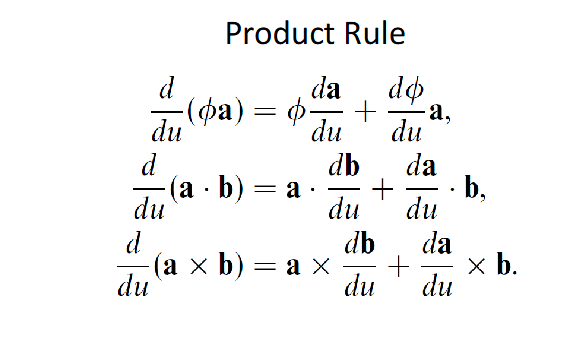Math Vectors
1/39
There's no tags or description
Looks like no tags are added yet.
Name | Mastery | Learn | Test | Matching | Spaced |
|---|
No study sessions yet.
40 Terms
Types Of Vectors
Position Vectors = A position vector gives the position of a point relative to a fixed point (usually the origin)
Line Vector = A line vector can “slide” along its line of action (e.g. force acting on a body)
Free Vector = A free vector is completely defined by its magnitude and direction (e.g. velocity)
Cartesian Co-ordinates Axes
P is the position co-ordinate of a point in 3D space
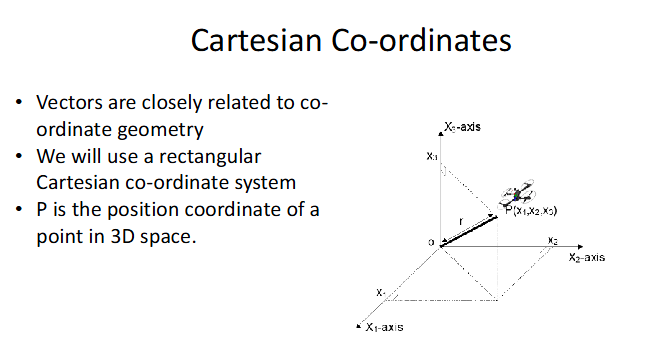
Distance In 3D Space
Pythagoras Theorem
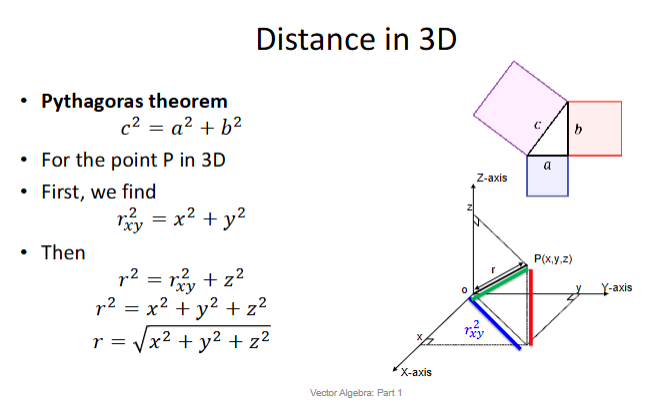
Geometric / Coordinate-Free Representation Of A Vector
Length indicates magnitude
Orientation indicates direction of the vector
Starting point is irrelevant
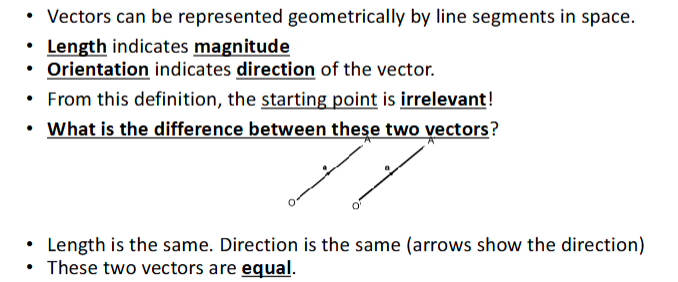

Equal And Parallel Vectors
Two vectors a and b are equal if they have the same magnitude and direction i.e. a = b
Anti-parallel vectors are equal in magnitude but opposite in direction.
Top picture from current lectures
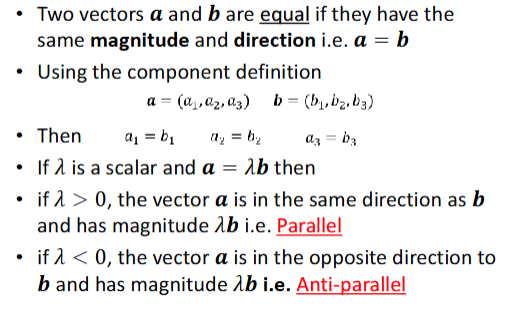
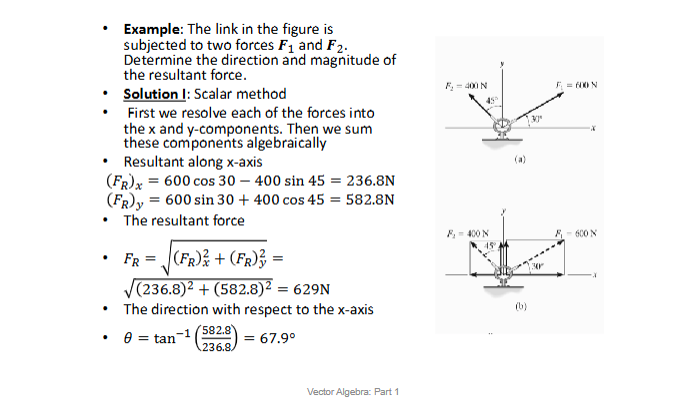
Determine Direction And Magnitude
Example : The link in the figure is subjected to two forces F1 and F2. Determine the direction and magnitude of the resultant force.
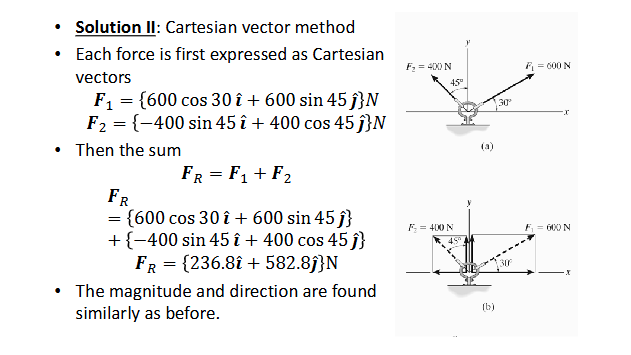
Right Hand Rule
A convention used to determine the direction of a vector resulting from a cross product, indicating how to align the fingers of your right hand with two vectors.
Goes the direction of the fingers given the thumb is pointing in the direction of the resulting vector.
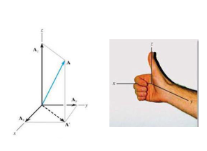
Unit Vector
A unit vector has a magnitude (modulus) equal to 1. It is defined by:

The Modulus (Magnitude) Of A 3D Vector

Directional Ratios
Consider a vector 𝑟 = 𝑥𝑖 + 𝑦𝑗 + 𝑧𝑘 which make angles 𝛼, 𝛽 and 𝛾 with the 𝑥, 𝑦 and 𝑧 axis respectively, as shown below
The values of
𝑥/|𝑟|, 𝑦/|𝑟| and 𝑧/|𝑟|
are called the direction cosines of vector 𝑟 = 𝑥𝑖 + 𝑦𝑗 + 𝑧𝑘. These allow the direction of the vector with respect to the axes to be determined.
The ratios 𝑥: 𝑦: 𝑧 are called the direction ratios of the vector.
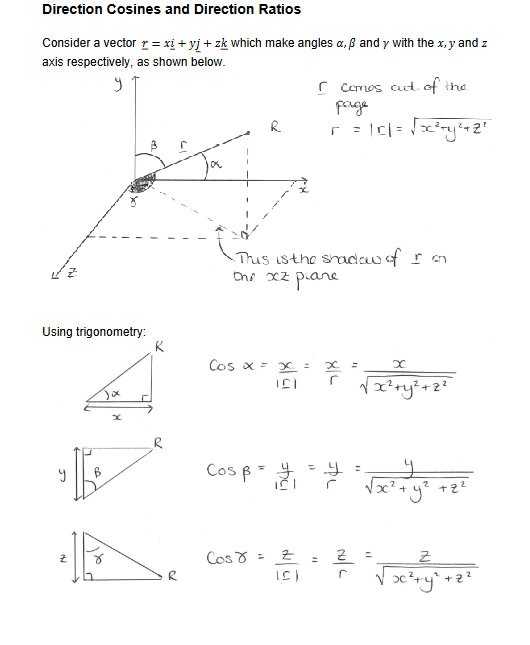
Directional Ratios Continued
l, m, n are the direction cosines of the line OP
m = cos (extended b sign) = (y / r)
n = cos (upsidedown fish) = (z / r)
l = cos (a with extra line at top right) = (x / r)
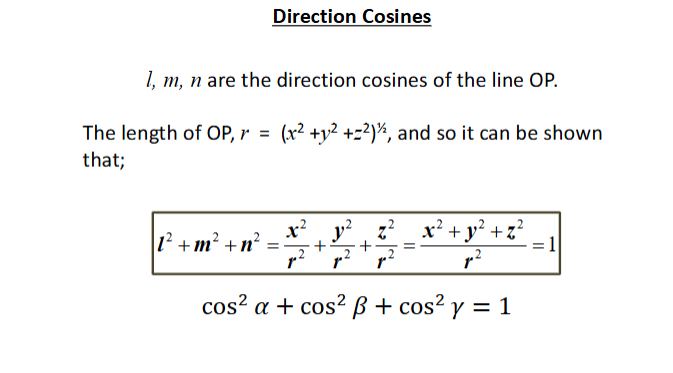
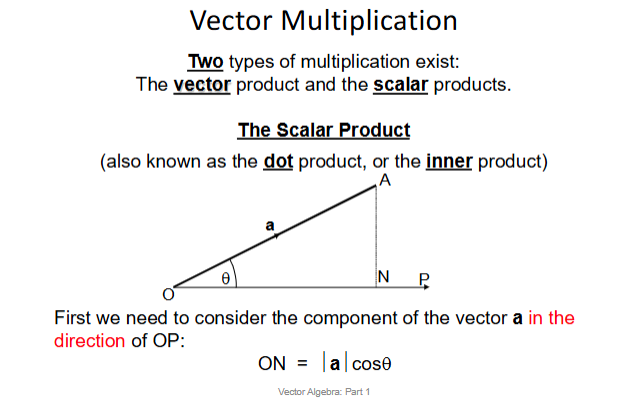
Scalar Product
The scalar product (or ‘dot’ product) of two vectors 𝑎 and 𝑏 is defined as the product of their magnitudes multiplied by the angle between them.
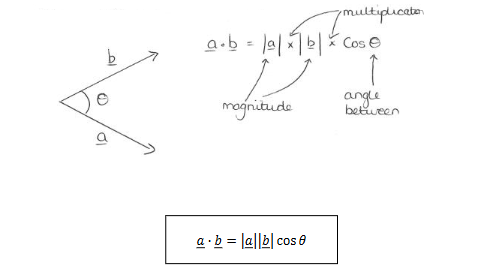
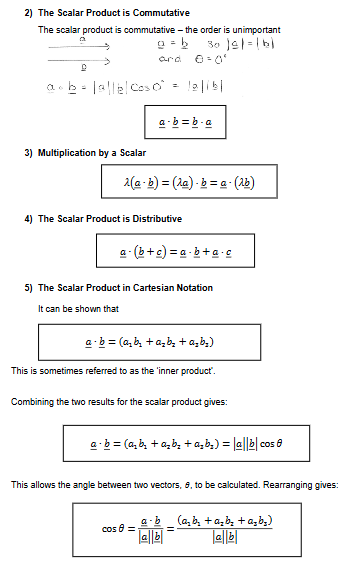
Scalar Product Continued
If two vectors are perpendicular the scalar product is equal to zero
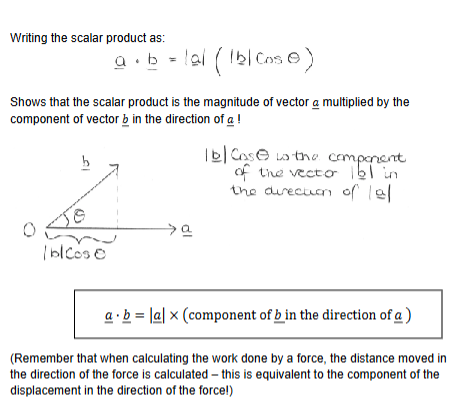
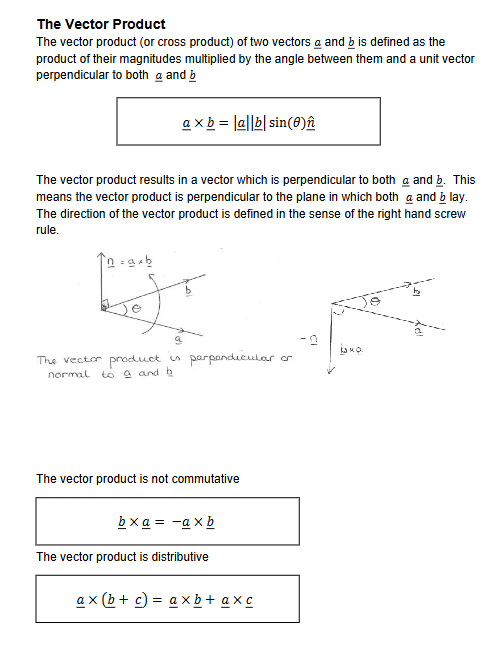
Vector Product
Top picture is more for this course

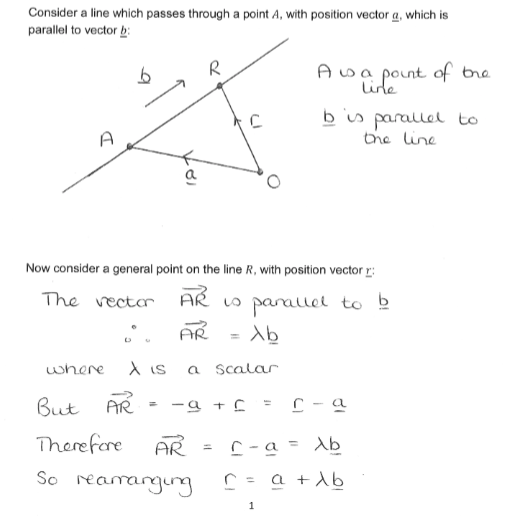
Vector Equation Of A Line
When one point and a parallel vector is known
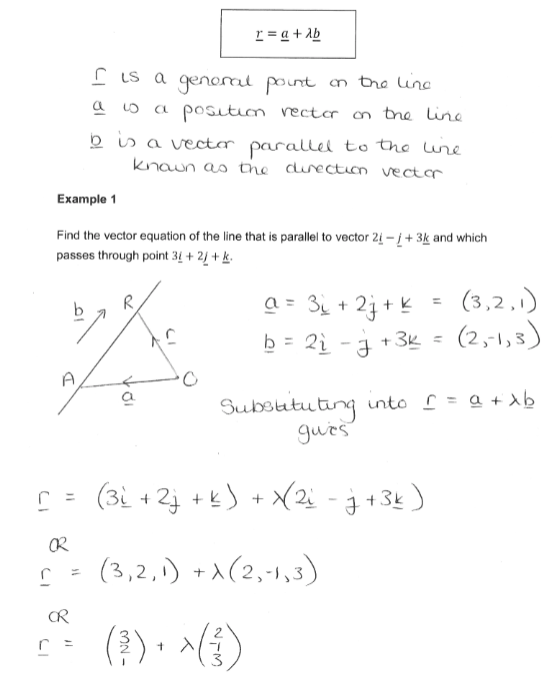
Vector Equation Of A Line
When two points on the line are known
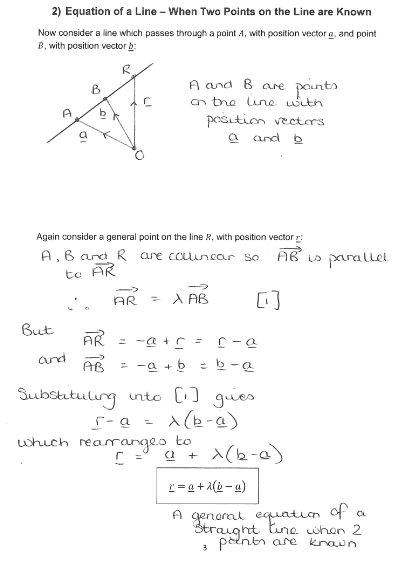
Showing A Point Lies On A Line
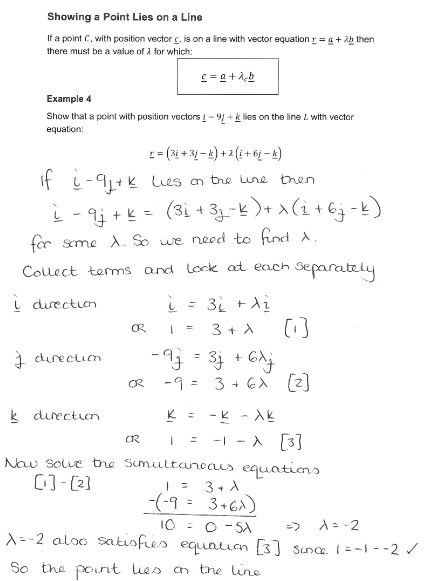
Finding Angles Between Two Lines
Two lines L1 and L2
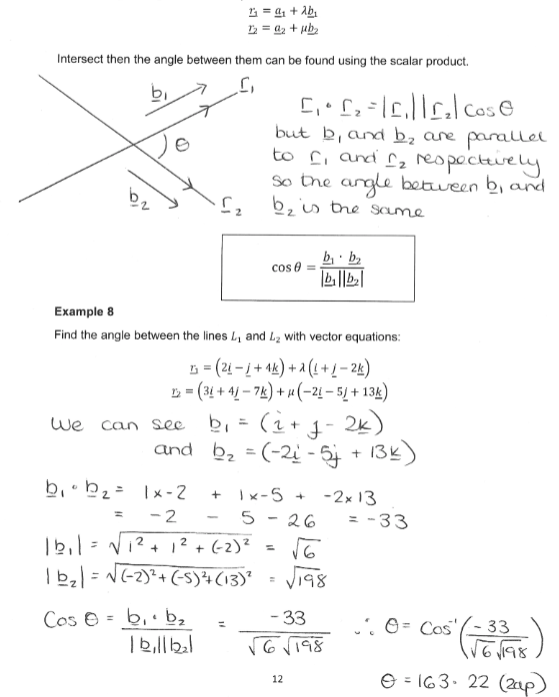
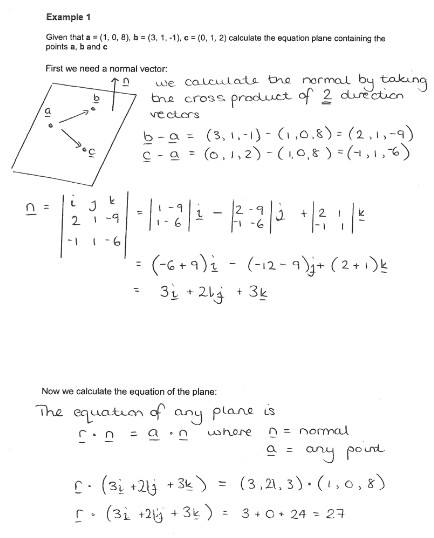
Vector Equation
Can be expressed using a point and two direction vectors that span the plane.

Angle Between Two Planes
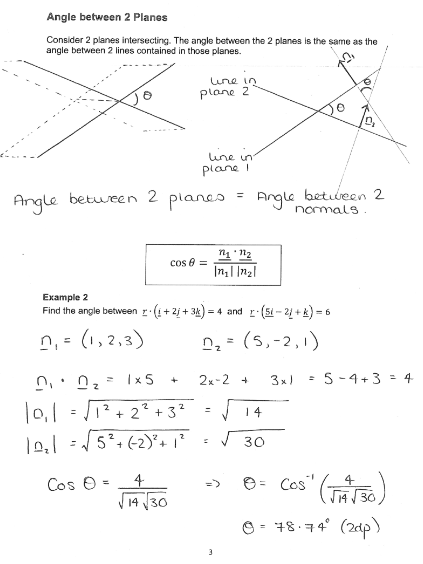
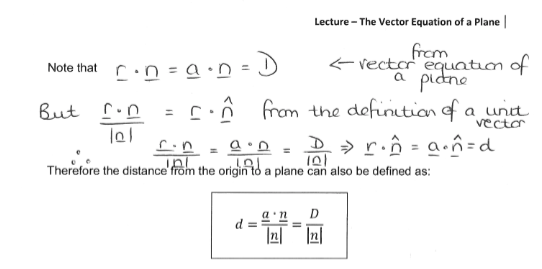
Distance From Origin To A Plane
The shortest distance from a point in space to the plane, calculated using the normal vector of the plane.
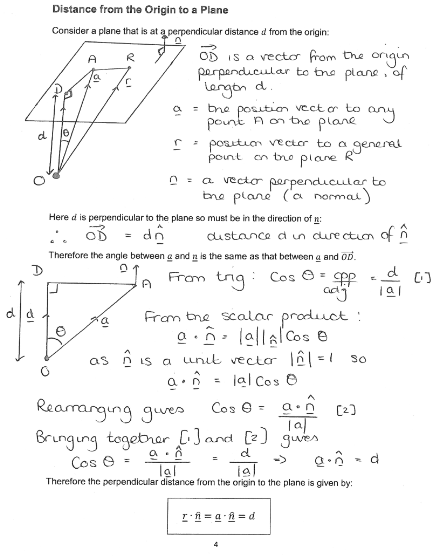
Cartesian Equation Of A Plane
An equation representing a plane in three-dimensional space, typically expressed in the form Ax + By + Cz + D = 0, where A, B, and C are the coordinates of the normal vector to the plane.

Relationship Between Work Done And Dot Product
Definition of work = Amount of displacement along the direction of displacement multiplied by the distance moved
Work Done = Force x Distance
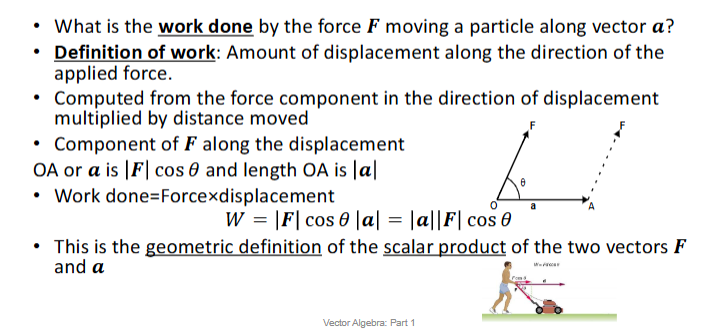
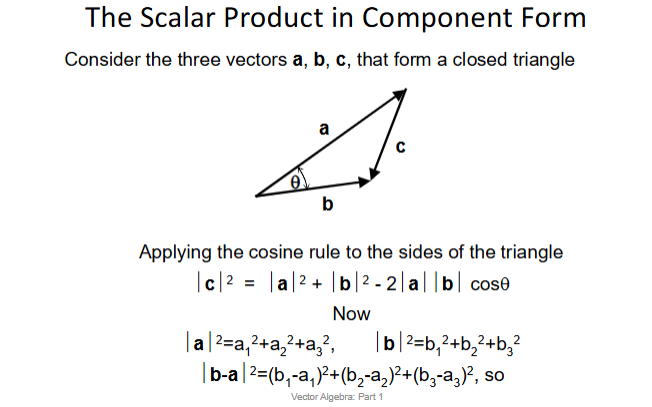
Scalar Product In Component Form
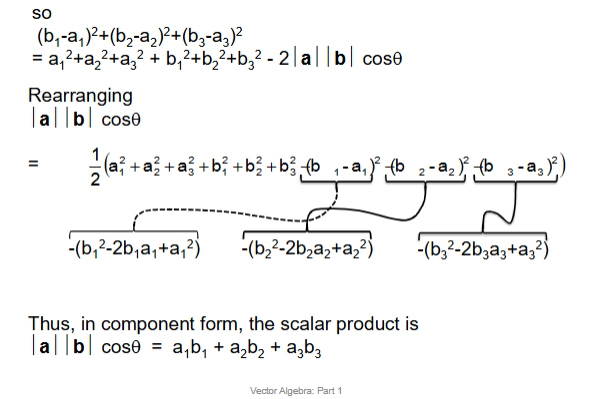
Scalar Product Definition
You cannot have a scalar product of three vectors. ‘dotting’ the first two gives a scalar.
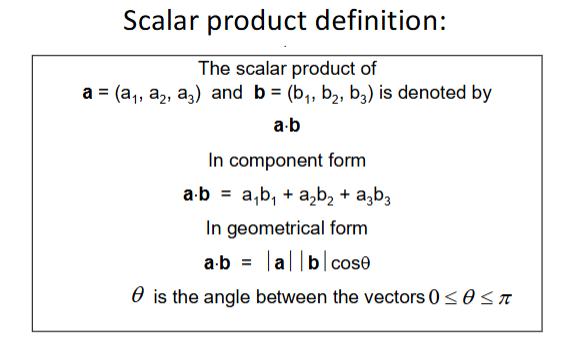
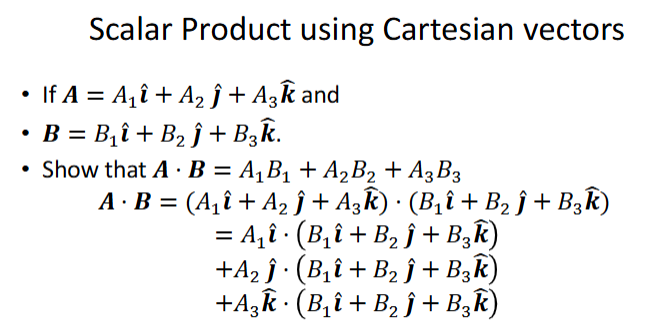
Scalar Product Using Cartesian Vectors
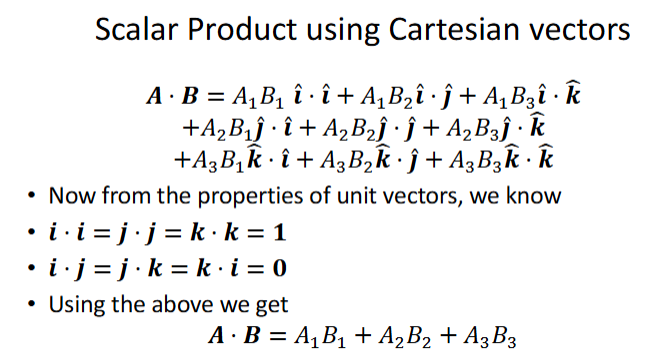
Powers Of Vectors
Only powers of two can be used in vectors any higher is not possible
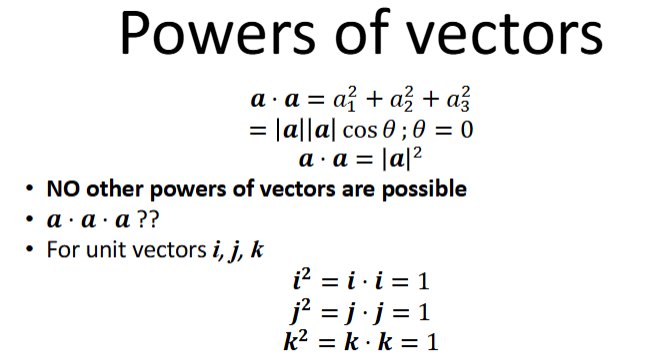
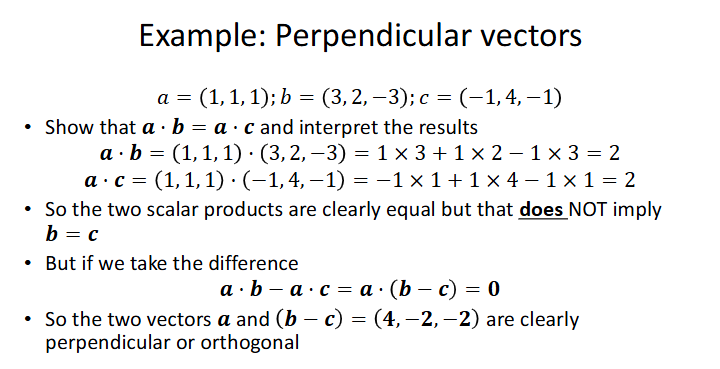
Perpendicular Vectors : Scalar Product
a . b = 0 does not imply that a and b are perpendicular, a could be 0 or b could be zero, its only when a and b are non-zero then a and b are perpendicular
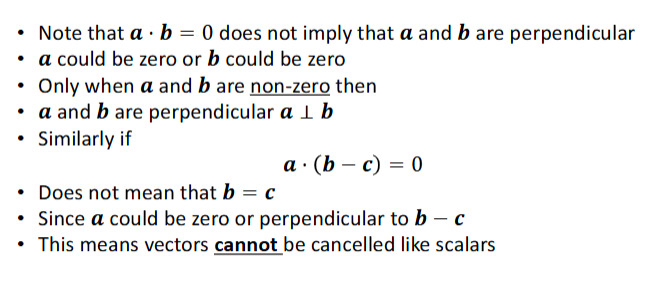
The Moment Of A Force
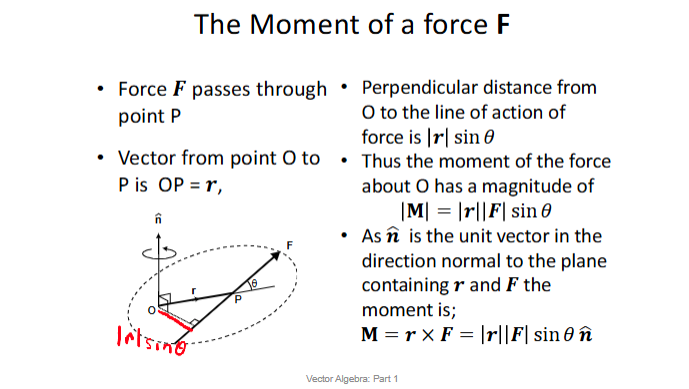
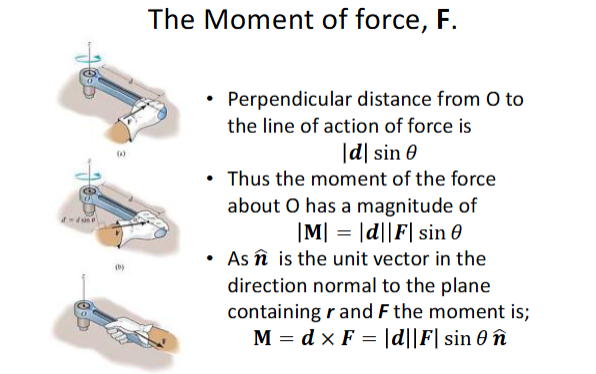
The Moment Of A Force Continued

Principle Of Transmissibility
We can use any position vector r measured from point O to any point on the line of action of the force F. Thus, Mo = r1 x F = r2 x F = r3 x F
Since F can be applied at any point along its line of action and still create this same moment about point O, then F can be considered a sliding vector. This property is called the principle of transmissibility of a force
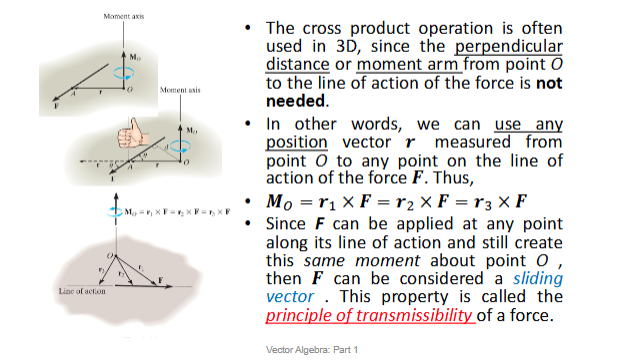
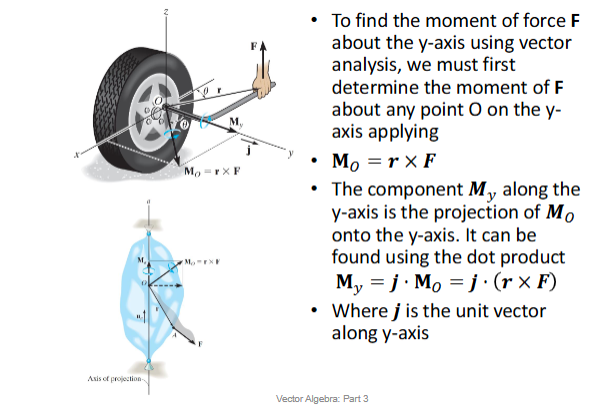
Find Moment Of Force About Y-Axis
To find the moment of force F about the y-axis using vector analysis, we must first determine the moment of F about any point O on the y-axis applying
Mo = r x F
The component My along the y-axis is the projection of Mo onto the y-axis. It can be found using the dot product My = j . Mo = j . (r x F)
Where j is the unit vector along y-axis
We can generalise the approach to any axis with unit vector Ua
Then the moment about an axis is Ma = Ua . Mo = Ua . (r x F)
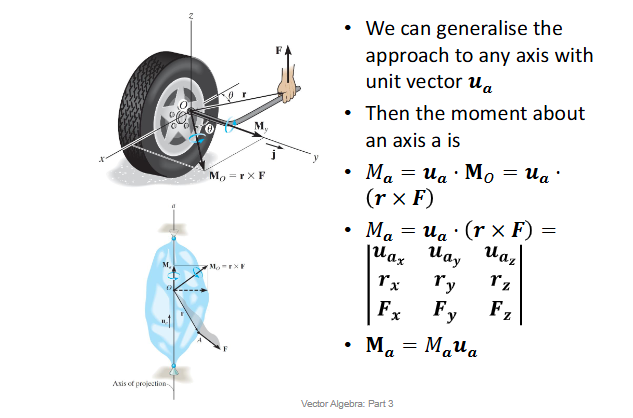
Key Points About Moment About An Axis
The moment of a force about a specified axis can be determined provided the perpendicular distance da from the force line of action to the axis can be determined. Ma = Fda.
If vector analysis is used, Ma = Ua . (r x F), where Ua defines the direction of the axis and r is extended from any point on the axis to any point on the line of action of the force.
If Ma is calculated as a negative scalar, then the sense of direction of Ma is opposite to Ua
The moment Ma expressed as a cartesian vector is determined from Ma = MaUa
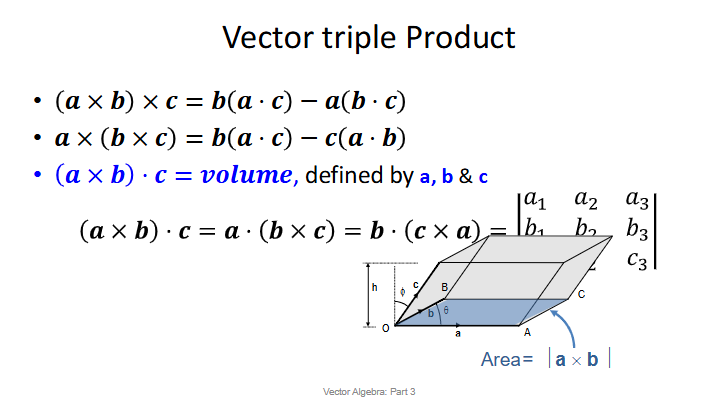
Vector Triple Product
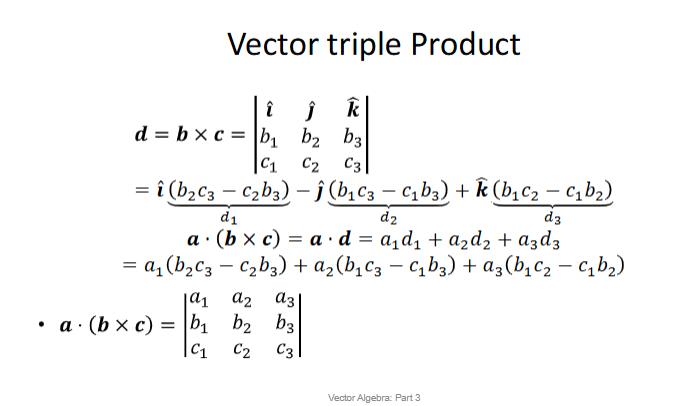
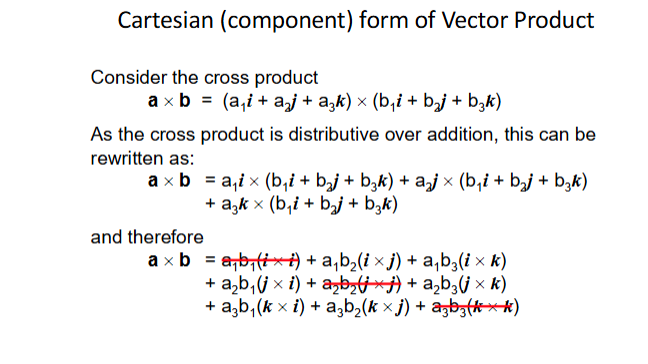
Cartesian Form Vector Product
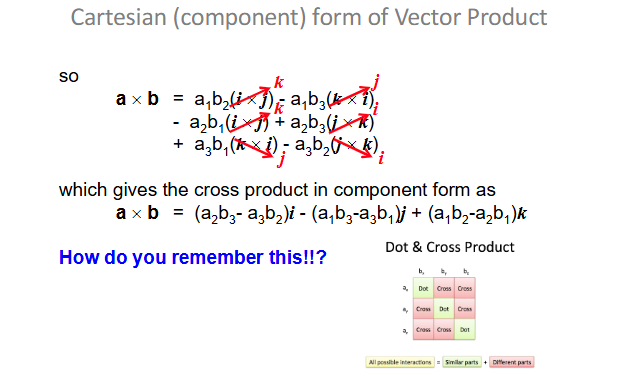
Cartesian Form Vector Product Continued
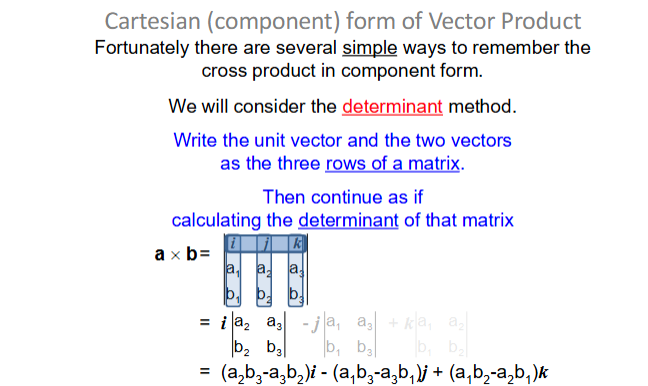
Parallel Vectors : Using Cross Product
Two vectors are parallel if their cross product equals zero, indicating they point in the same or opposite directions.
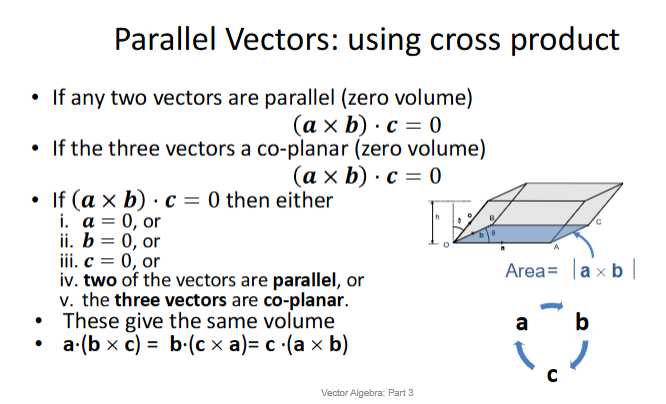
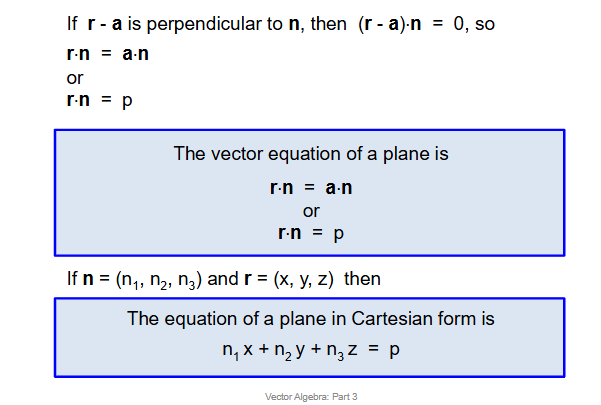
Vector Equation Of A Plane
a = position vector to a point on the plane, called A
r = position vector to a general point on the plane, R
n = a vector perpendicular to the plane (a normal)
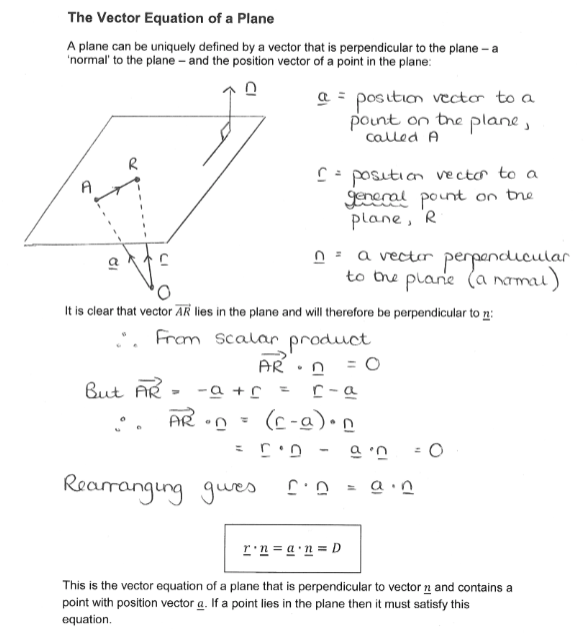
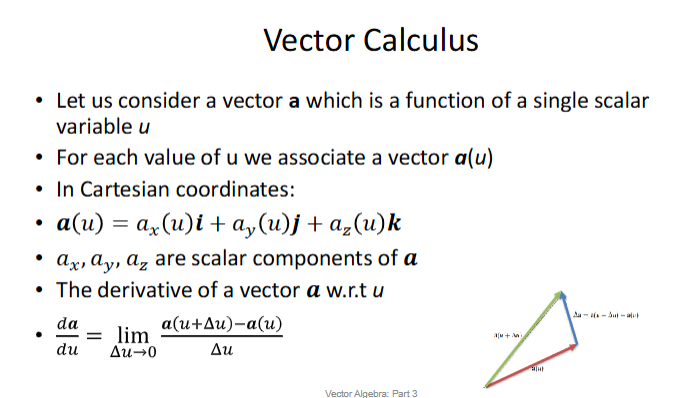
Vector Calculus
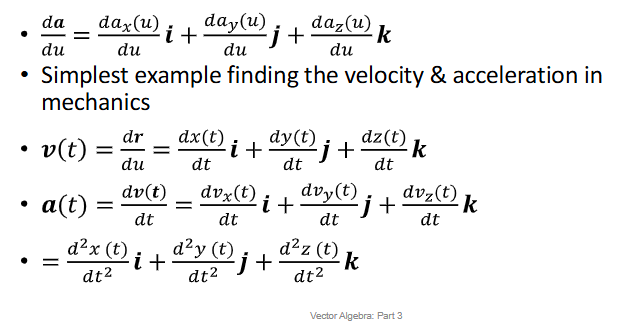
Vector Calculus Product Rule
